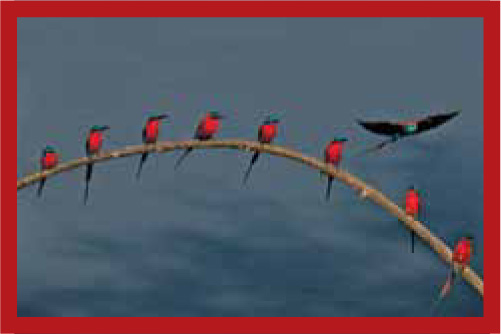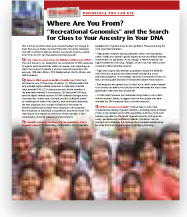CONTENTS
|
Visibility in motion |
|
|
Animals are just one branch of the Eukarya domain. 446 |
|
|
11.1 |
What is an animal? 446 |
|
11.2 |
There are no “higher” or “lower” species. 447 |
|
11.3 |
Four key distinctions divide the animals. 448 |
|
Invertebrates— |
|
|
11.4 |
Sponges are animals that lack tissues and organs. 452 |
|
11.5 |
Jellyfishes and other cnidarians are among the most poisonous animals in the world. 454 |
|
11.6 |
Flatworms, roundworms, and segmented worms come in all shapes and sizes. 456 |
|
11.7 |
Most mollusks live in shells. 459 |
|
11.8 |
Are some animals smarter than others? 462 |
|
11.9 |
Arthropods are the most diverse group of all animals. 463 |
|
11.10 |
This is how we do it: How many species are there on earth? 465 |
|
11.11 |
Flight and metamorphosis produced the greatest adaptive radiation ever. 467 |
|
11.12 |
Echinoderms are vertebrates’ closest invertebrate relatives and include sea stars, sea urchins, and sand dollars. 468 |
|
The phylum Chordata includes vertebrates, animals with a backbone. 470 |
|
|
11.13 |
All vertebrates are members of the phylum Chordata. 470 |
|
11.14 |
The evolution of jaws and fins gave rise to the vast diversity of vertebrate species. 473 |
|
11.15 |
The movement onto land required lungs, a rigid backbone, four legs, and eggs that resist drying. 474 |
|
All terrestrial vertebrates are tetrapods. 476 |
|
|
11.16 |
Amphibians live a double life. 476 |
|
11.17 |
Birds are reptiles in which feathers evolved. 477 |
|
11.18 |
Mammals are animals that have hair and produce milk. 479 |
|
11.19 |
Humans tried out different lifestyles. 481 |
|
11.20 |
How did we get here? The past 200,000 years of human evolution. 483 |
|
Where are you from? “Recreational genomics” and the search for clues to your ancestry in your DNA 486 |
|
XV
 11 • Animal Diversification 445
11 • Animal Diversification 445 StreetBIO: KNOWLEDGE YOU CAN USE
StreetBIO: KNOWLEDGE YOU CAN USE